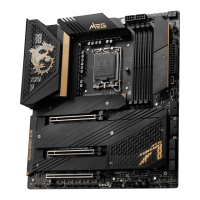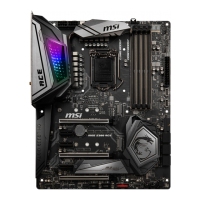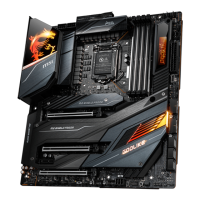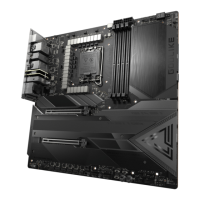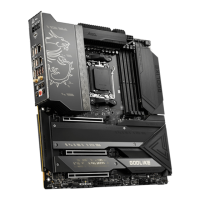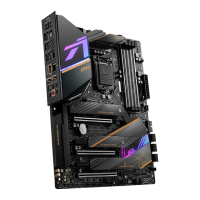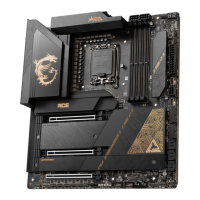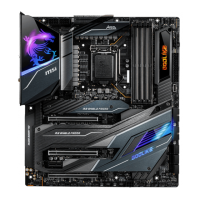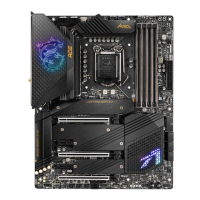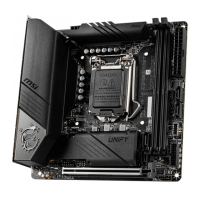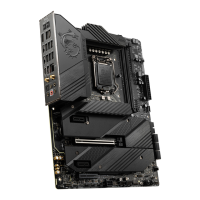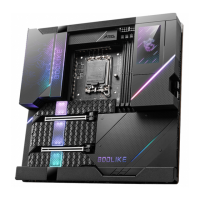
Do you have a question about the MSI MEG Z690 GODLIKE and is the answer not in the manual?
| Processor socket | LGA 1700 |
|---|---|
| Processor manufacturer | Intel |
| Compatible processor series | Intel Celeron G, Intel Pentium Gold |
| Maximum number of SMP processors | 1 |
| Non-ECC | Yes |
| Memory channels | Dual-channel |
| Memory slots type | DIMM |
| Number of memory slots | 4 |
| Supported memory types | DDR5-SDRAM |
| Maximum internal memory | 128 GB |
| Supported memory clock speeds | 4800, 5000, 5066, 5333, 5400, 5800, 6000, 6200, 6400, 6600, 6666 MHz |
| LAN controller | Intel I225-V |
| Wi-Fi standards | Wi-Fi 6E (802.11ax) |
| Bluetooth version | 5.2 |
| Ethernet interface type | 2.5 Gigabit Ethernet |
| Number of SATA III connectors | 6 |
| USB 3.2 Gen 2 (3.1 Gen 2) connectors | 2 |
| USB 2.0 ports quantity | 0 |
| USB 3.2 Gen 2 (3.1 Gen 2) Type-A ports quantity | 8 |
| RAID levels | 0, 1, 5, 10 |
| Supported storage drive types | HDD & SSD |
| Supported storage drive interfaces | M.2, SATA III |
| Cables included | SATA |
| PCI Express x16 slots | 3 |
| BIOS type | UEFI AMI |
| Audio chip | Realtek ALC4082 |
| Component for | PC |
| Motherboard chipset | Intel Z690 |
| Audio output channels | 7.1 channels |
| Motherboard form factor | Extended ATX |
| Parallel processing technology support | Crossfire, SLI |
| Depth | 310 mm |
|---|---|
| Width | 305 mm |
Information on SATA and M.2 storage interface connectors.
Information on the LGA1700 CPU socket and installation precautions.
Details on DDR5 DIMM slots and memory installation recommendations.
Steps for installing M.2 SSDs in M2_1 and M2_3 slots.
Steps for installing M.2 SSDs in M2_2 and M2_6 slots.
Steps for installing M.2 SSDs in M2_4 and M2_5 slots.
Details on SATA 6Gb/s interface ports for storage devices.
Pinout and usage of the front panel audio connector.
Connectors for case buttons, LEDs, and audio.
Connecting front panel USB 3.2 Gen 2x2 20Gbps Type-C ports.
Connecting front panel USB 3.2 Gen 1 5Gbps ports.
Connecting front panel USB 2.0 ports.
Classification of PWM and DC fan connectors.
Procedure to reset BIOS settings using the Clear CMOS jumper.
Explains the Debug Code LED for POST status and temperatures.
Explains the EZ Debug LEDs for diagnosing boot and hardware issues.
Step-by-step guide for installing Windows 10 or Windows 11.
Instructions for installing essential motherboard drivers.
Benefits and advantages of using UEFI BIOS over traditional BIOS.
Key combinations and steps to access the BIOS setup menu.
Procedures for resetting BIOS settings to their default values.
General steps and methods for updating the motherboard BIOS.
